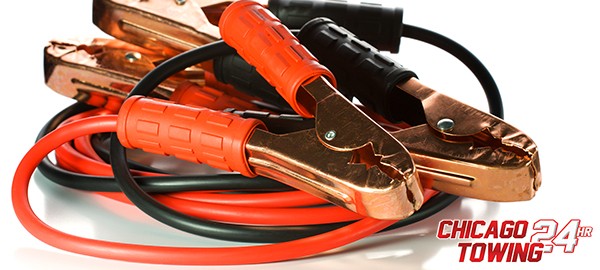If you’re on the road and find that the battery of your vehicle suddenly runs out, you may want to attempt to jumpstart the battery using another vehicle’s power and some jumper cables. You can either attempt to signal another driver on the road, or contact a friend or someone in your phone if it’s in a location that they can travel to. It can be a fantastic fix if you have all the necessary equipment. Here’s a guide to effective jump starting as prepared by the towing and vehicle recovery experts at Towing Chicago.
Safety Verification
First, you need to check the engine to make sure that it’s safe to jump start it. Check if the battery is damaged, leaking, or corroded. Don’t attempt jump starting if it is. Make sure all electronic vehicle features and the headlights are turned off, and that the keys are removed from the ignition. Take all metal objects away from the car’s battery, and make sure there’s no naked flames around – including a lit cigarette.
Jump Starting Process
- Ensure that both vehicles being used are in park or neutral position, with their ignition off. They have to be parked close together. Pop each vehicle’s trunk, and ensure that the jumper cables can comfortably reach each vehicle’s engine.
- Grab the positive labeled cable and attach it to the positive battery terminal on your vehicle, and then attach it to the same terminal on the working car battery. You can find out which cable this is by looking for a POS or + sign, and they are usually larger than the negative battery terminal.
- Grab the negative cable and attach it to the negative terminal on the working car battery.
- Then attach this cable to a metal piece on your vehicle far from the battery like a bracket, bolt, or even a jump start pole if your vehicle has this. You want to make sure that the negative cable is only connected to the negative terminal on the WORKING BATTERY, and that the other end is positioned away from the dead battery.
- Turn the engine on the car with the working battery and let it run for a few moments.
- Then try to start your car. Hopefully the engine will turn on. If it doesn’t, make sure all the connections are properly connected, and try again after letting the car with the working engine run for between five and ten minutes. If this doesn’t work, you will likely need a battery replacement.
Further Jump Start Tips
- Don’t turn off your engine once it stops working – keep it running to charge up the battery, and drive at least 15 minutes before turning off the engine.
- If you try to turn the engine on later and it doesn’t, it’s likely you will need to replace your car’s battery as it’s showing signs of being incapable of holding a power charge.

